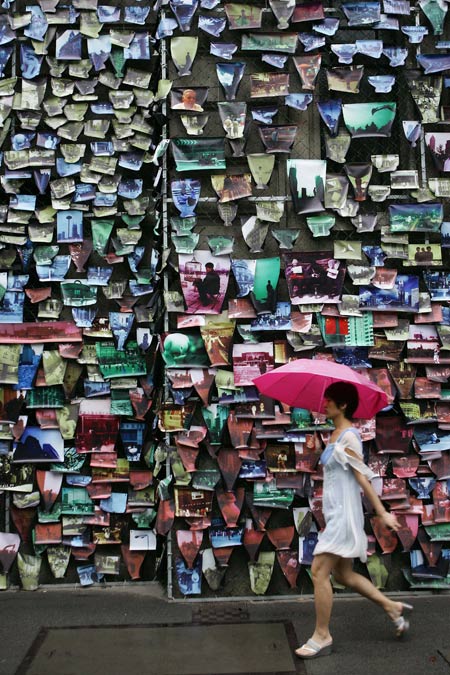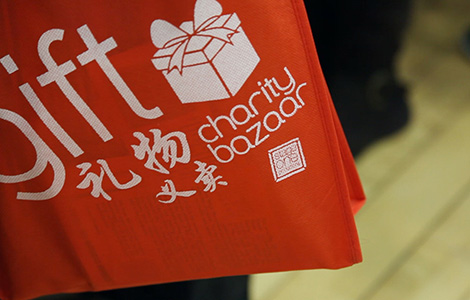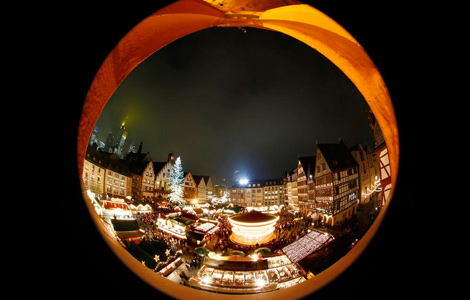Feeding Asia's art
Updated: 2013-11-29 02:15
By Xu Jingxi (China Daily)
|
|||||||||||
Experts see professional biennials as a way to elevate the continent's defining contemporary artists, Xu Jingxi reports from Guangzhou.
A telephone and a thick phone book were all that Zhang Qing was given to make China's first genuine biennial happen. "The 'make-it-work' magic was my enthusiasm for biennales and determination to win back the right from Western curators to judge and choose Chinese contemporary art," recalls the curator who was the chief organizer of the acclaimed Shanghai Biennial from 1999 to 2012. In those memorable days, he sat in a hallway of the Shanghai Art Museum making phone calls one after another to raise sponsorships for the event in 2000. Chinese contemporary artists made their debut in a grand international exhibition in 1993 at Venice Biennial. Achille Bonito Oliva, the chief curator of the biennial at that time, came to China to choose what he thought represented Chinese contemporary art.
"In the 1990s, it was the West that set the standards for what is Chinese contemporary art and what qualified to be shown at international exhibitions and art markets. By hosting biennials, we have our own platform where we have a say about choosing contemporary art of China and other countries," Zhang says.
The Shanghai Biennial actually began in 1996, but prior to 2000 it mainly displayed oil and ink paintings by domestic artists.
The breakthrough came in 2000, when 67 artists from 18 countries and regions expressed their insights about the theme "Spirit of Shanghai" with more than 300 art works in a great diversity of forms including painting, sculpture, photography, installation art, video and architecture.
"The exhibition meets the three fundamental criteria of a biennial: contemporary, international and academic," says Zhang, whose big beard cannot hide his smile of pride. "The Shanghai Biennial 2000 was China's first genuine biennial and a landmark in the country's art history."
The biennial set a professional standard for successive international exhibitions in China, including insurance for exhibits, a panel of UNESCO experts to decide on awards, and a team of curators made of both experts from the host country and elsewhere.
Biennials have sprung up across China in recent years.
Funding is easier thanks to the rapidly growing economy. People's interest in art has surged as more can afford material and aesthetic pleasures. Foreign artists are also excited about coming to China, the vibrant new power, to showcase their works at all kinds of exhibitions.
"Many so-called 'biennials' fail to meet the three fundamental criteria. Some of them interpret the term 'biennial' superficially as an exhibition held every two years and display works of only one art category. I've seen such disappointing examples as landscape-painting biennial and tiger-painting biennial," Zhang says.
These unqualified shows were short-lived, while those biennials meeting strict standards stand the test of time, such as the Venice Biennale with its history of 118 years.
Related Stories
Xuanjuan wins the silver award at the Shanghai International Arts Festival 2013-11-25 16:37
Shanghai Art Fair sets sales record 2013-11-22 21:20
Cai Guoqiang unveils his serene side in art show 2013-11-22 21:19
The opening ceremony of the 13th Asia Art Festival 2013-11-22 14:43
Asia Art Festival opens in Kunming 2013-11-22 14:42
Art explores special relationship 2013-11-22 11:24
Today's Top News
Pacts to boost economic cooperation
British to cultivate closer trade links
Air zone 'not aimed at civilian flights'
Industrial sector's profits rise in Oct
Holiday plans stir up complaints
Chinese premier carries hectic schedule
EU, China set timetable for talks
FTA to work on its negative list
Hot Topics
Lunar probe , China growth forecasts, Emission rules get tougher, China seen through 'colored lens', International board,
Editor's Picks

|

|

|

|

|

|






